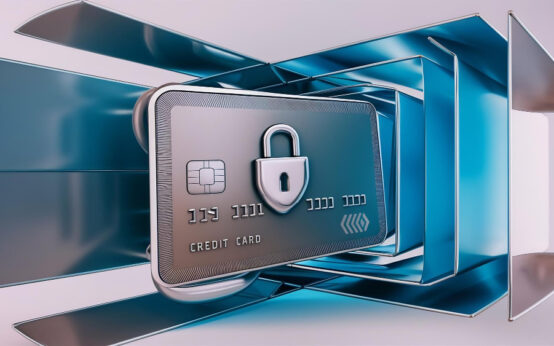Are you a student looking to build your credit history and manage your finances effectively? Student credit cards are designed for individuals like you, offering unique benefits and opportunities to start your financial journey the right way. In this blog post, we’ll explore the advantages, how to select the best card, and tips to maximize your benefits while avoiding common pitfalls.
Benefits of Student Credit Cards
Student credit cards offer several advantages. First, they are designed to help build credit history. As students use these cards responsibly, they develop a credit score, which is crucial for future financial decisions. Second, many student credit cards have educational resources that teach financial literacy, helping young adults make informed choices.
Additionally, student credit cards often come with rewards and incentives. These may include cash back on purchases, discounts on textbooks, or points that can be redeemed for various goods and services. These rewards encourage students to spend wisely and manage their finances better.
Another benefit is the lower credit limits typically associated with student cards. This can prevent excessive debt accumulation and promote responsible spending. Furthermore, some student credit cards offer zero or low annual fees, making them accessible to those who may not have a significant income.
Lastly, student credit cards often provide fraud protection and security features. These measures ensure that students can use their cards confidently, knowing they are safeguarded against unauthorized transactions.
How to Choose the Right Student Credit Card

When choosing the right student credit card, consider your specific needs and financial situation. Initially, look for cards with no annual fees, as you’ll want to maximize your savings. Many student credit cards offer rewards programs, so choose one that matches your spending habits. For example, if you spend a lot on groceries, look for a card that offers higher rewards in that category.
Next, pay attention to the APR (Annual Percentage Rate). While you should aim to pay off your balance each month to avoid interest charges, it’s wise to understand the APR rate in case you need to carry a balance.
You should also evaluate the credit limit. A card with a reasonable limit can help build your credit score while preventing overspending. In addition, some cards provide introductory offers like 0% APR for a certain period. These can be beneficial if you plan on making larger purchases.
Check if the card offers any educational resources or tools for managing your credit. Many student credit cards come with free access to your credit score, which is essential for tracking your financial health. Additionally, look for cards with strong security features like zero-liability protection and fraud alerts.
Finally, read the fine print before applying. Understanding all terms and conditions ensures you’re making an informed decision. Using these guidelines, you’ll find a student credit card that suits your needs while aiding in your financial growth.
Building Credit with Student Cards
To build credit with student cards, start by understanding how credit works. Your credit score is a reflection of your financial history and affects your ability to get loans, rent apartments, and even find a job. Using student credit cards responsibly can set the foundation for a solid credit history.
Begin with selecting the right card. Look for a student card with no annual fees, low interest rates, and rewards like cashback or points. Apply and, upon approval, ensure you use your credit card regularly but wisely.
Make small purchases that you can pay off in full each month. This habit keeps your credit utilization low, which is beneficial for your credit score. Consistent, on-time payments are crucial; missed payments can significantly damage your score.
Avoid applying for too many cards or maxing out your credit limit. Keep your balance below 30% of your credit limit. This shows lenders you can manage credit responsibly.
Lastly, periodically check your credit report for inaccuracies. Correcting errors can prevent negative impacts on your score. Building credit takes time and patience, but smart use of a student credit card can set you on the right path.
Common Mistakes to Avoid

- One common mistake students make is maxing out their credit limit. This can negatively impact your credit score. Keep your balance below 30% of your available credit.
- Failing to pay your balance in full is another error. Interest rates on student credit cards can be high, so try to avoid carrying a balance whenever possible.
- Avoid applying for multiple credit cards at once. Multiple hard inquiries can lower your credit score. Choose one card that best suits your needs.
- Overlooking the terms and conditions is also a mistake. Always read the fine print to understand fees, interest rates, and rewards.
- Another pitfall is missing payments. Set up reminders or automatic payments to ensure you pay on time. Late payments can have serious consequences on your credit score.
- Using credit for non-essential purchases is a common trap. Stick to a budget and use your card for essential expenses to build good financial habits.
Top Student Credit Cards in 2023
- Discover it® Student Cash Back: 5% cash back on everyday purchases, 1% on others. Ideal for frequent shoppers.
- Chase Freedom® Student: Unlimited 1% cash back on all purchases. No annual fee and a $50 sign-up bonus.
- Capital One® Quicksilver® Student Cash Rewards: 1.5% cash back on every purchase, no annual fee, and no foreign transaction fees.
- Bank of America® Travel Rewards for Students: Earn 1.5 points for every dollar spent. Perfect for travel-savvy students.
- Deserve® EDU Mastercard for Students: 1% cash back on all purchases, no annual fee, and Amazon Prime Student subscription reimbursement.
Perks and Rewards
Most student credit cards offer cash back on various purchase categories such as groceries, gas, and dining. Some cards even provide sign-up bonuses, travel rewards, and cashback match.
Interest Rates & Fees
Pay attention to APR, annual fees, and any other hidden costs. Many student cards offer introductory 0% APR on purchases during the first six months.
Credit Building Features
Many student cards offer free access to your credit score and tools to monitor spending. Some even report your payments to major credit bureaus, helping build your credit history.
Choosing the right student credit card can make a significant difference in your financial journey. Look for cards with low fees, substantial rewards, and credit-building features.



 Best credit cards secured: your path to a stronger credit history <p style='text-transform:none; line-height:20px !important; font-size:16px; font-weight:normal; color:#424242; margin: 0px; margin-top:10px;'>They offer a smart way to show lenders you’re serious about managing your finances.</p>
Best credit cards secured: your path to a stronger credit history <p style='text-transform:none; line-height:20px !important; font-size:16px; font-weight:normal; color:#424242; margin: 0px; margin-top:10px;'>They offer a smart way to show lenders you’re serious about managing your finances.</p>  The best credit cards for lounge access: your key to premium airport comfort <p style='text-transform:none; line-height:20px !important; font-size:16px; font-weight:normal; color:#424242; margin: 0px; margin-top:10px;'>With these cards, you have exclusive access to lounges, offering comfort while you wait for your flight.</p>
The best credit cards for lounge access: your key to premium airport comfort <p style='text-transform:none; line-height:20px !important; font-size:16px; font-weight:normal; color:#424242; margin: 0px; margin-top:10px;'>With these cards, you have exclusive access to lounges, offering comfort while you wait for your flight.</p>  Safe, simple, and fun: discover the best debit cards for kids <p style='text-transform:none; line-height:20px !important; font-size:16px; font-weight:normal; color:#424242; margin: 0px; margin-top:10px;'>These cards offer the flexibility and convenience that both parents and kids need.</p>
Safe, simple, and fun: discover the best debit cards for kids <p style='text-transform:none; line-height:20px !important; font-size:16px; font-weight:normal; color:#424242; margin: 0px; margin-top:10px;'>These cards offer the flexibility and convenience that both parents and kids need.</p>